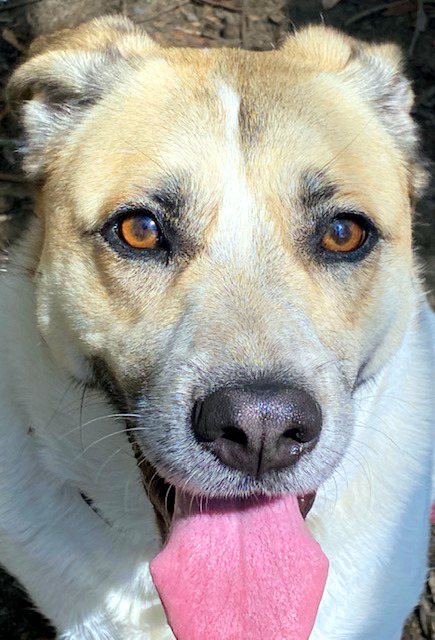Accentuate the Positive:
Why and How to Interrupt Your Dog

When your dog is doing something naughty, your first response might be to shout "no" or "ah-ah" or to say their name in a stern, disapproving voice. While this might successfully interrupt the behavior momentarily, your dog has not learned what they are supposed to do in that situation. As a result, they will likely engage in the same behavior at the next opportunity. If telling your dog no actually worked, you would never need to train your dog at all. Chances are you have used verbal corrections hundreds of times, and your dog still engages in inappropriate behaviors.
The past few decades have seen an explosion of research on how dogs learn and which training methods work best. The science is undeniably clear: positive reinforcement and force-free training methods are more humane and produce better results. They also make for a better relationship between dog and guardian and a happier dog.
Saying no will decrease a behavior if it’s consistently followed by punishment. For decades, people have used shouting, spray bottles, leash pops, prong and shock collars, and physical punishment to "train" dogs out of unwanted behaviors. The unfortunate truth is that punishment does work, but it comes at a heavy price. Even when applied by an expert trainer with perfect timing, using aversives and negative reinforcement can result in a host of new problems, from learned helplessness to increased aggression. The science is clear on this, as well.
Force-free trainers often use differential reinforcement of an incompatible behavior (DRI) to address unwanted behaviors. Don’t get bogged down by the fancy name - it simply means teaching and reinforcing a wanted behavior to replace an unwanted behavior. For instance, if your dog jumps up to say hello, we teach them to sit before receiving attention or treats. Your dog cannot sit and jump at the same time. Instead of just stopping the jumping behavior, you are teaching the dog how to get what they want in an acceptable way.
Learning a new skill takes time and practice. Teaching replacement behaviors isn’t an immediate or quick fix. I also recommend using positive interrupters rather than shouting no or physically using a leash to drag your dog away from something. These positive interrupters refocus or redirect your dog’s attention when they are about to engage in unwanted behavior. Here are a few you can use.
Instead of shouting "no" or "off" or "shhh," ask for a "touch". Teaching touch is easier than teaching a dog to sit. (Video: teaching hand targeting). Touch is the simplest way to redirect your dog’s attention and get them to focus on you. Practice touch at home, then slowly ask for the behavior in increasingly distracting situations. If your dog ignores the cue, go back and practice in a less distracting environment.
Don't be that person who says their dog's name every 10 seconds to get their attention. When my kids barrage me with "mom, mom, mom, mama, mother, mom, mommy," I usually tune it out, just as your dog may ignore you when you say their name for the 100th time. Here’s a useful video on how to teach an attention noise to get your dog to focus without repetitive name calling.
This fun game is helpful for dogs who become over-aroused or hyper-focused on a stimulus. Say "find it," and toss a pile of treats or kibble on the ground and let them sniff and scavenge. “Find it” is helpful if you need a moment of distraction when you can’t easily move away from something scary or over-arousing. Your dog is not learning anything by being distracted, but they are not getting the opportunity to practice the unwanted behavior. Teach first without any distractions until your dog immediately and automatically scans the floor for treats when you say the cue.
A solid recall can be a literal lifesaver. Once your dog learns to come when called, use "come" and a treat to interrupt or avoid problematic behaviors. Remember, it is easier for your dog to move away from something before fully engaging with it. For example, call your dog before they approach the dead seal on the beach, not once they are rolling in it. If you struggle with recall, work with a force-free trainer; you can find local Bay Area force-free dog trainers on GoDogPro.com.
This is a good one to use as an informal recall. I teach my dogs to move in my direction/follow me when I say “let’s go” and they get a treat as we walk away or change direction. Both recall and “let’s go” are great alternatives to using a leash to drag your dog away from something. Keep it upbeat and practice in low distraction environments so your dog feels happy about coming when called or following you.
A basic rule of dog training is that any behavior that gets reinforced gets repeated. All of these skills require using either food or toys as reinforcers. For your dog to happily and quickly focus on you or move away from exciting or smelly or yummy things, the reinforcers need to be consistent and high quality. Verbal praise, petting, or boring treats are not strong enough rewards! It may take some trial and error to discover what is most reinforcing for your individual dog. A reinforcer is not just something your dog likes - it’s something your dog will work for or go out of their way to get.
All good things take time. But with the right reinforcement and some positive interrupters, you and your pup will be well on the way to great behavior before you know it.

